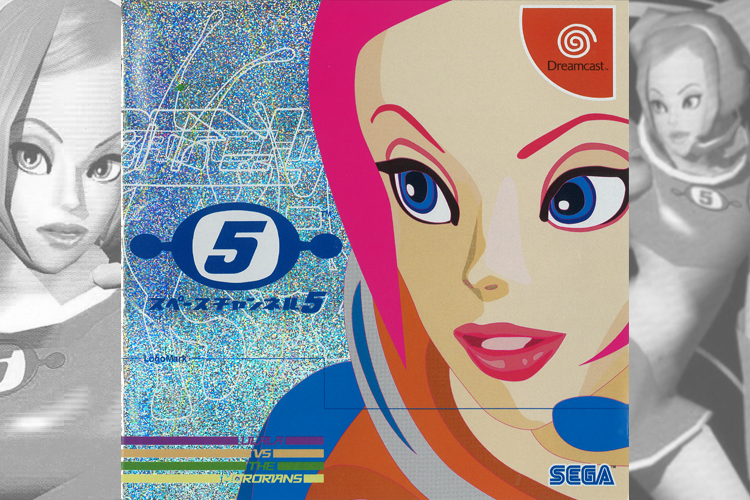
The Dreamcast era was a unique time for SEGA when it came to marketing their characters. While the Saturn’s launch made the error of shifting the spotlight away from Sonic the Hedgehog, the Dreamcast launch proved that there was more than enough room for established characters as well as new faces. Joining Sonic was a lineup of first party and third party faces, from Midway’s Afro Thunder of Ready 2 Rumble and Namco’s Soulcalibur fighters to SEGA’s own creations.
Space Channel 5’s Ulala was without a doubt the most heavily marketed of these new characters, with her face seen just about everywhere. Ulala appeared in a promotional stage show at Universal City Walk, she dominated SEGA’s booth at 2000’s E3, she was seen in print and on TV and even appeared as product placement in the 2001 movie Josie and the Pussycats. There was even talk of Ulala hosting her own TV show! Suffice to say, there came a point in Space Channel 5‘s promotion where Ulala nearly overshadowed her own game. There is no doubt that Ulala is a fantastic character (she is a favorite of the SEGAbits staff, so much so that we named our podcast after her report show), but has the original game stood the test of time? Let’s find out as we look back at the United Game Artists’ classic Space Channel 5!

The world of Space Channel 5 exists 500 years in the future, where 1960s aesthetics are back in style and despite the advent of mobile digital streaming services in the early 21st century, TV is still a thing. Don’t let the the bright visuals and crazy premise fool you, Ulala has a surprisingly tragic past. Having lost her parents in a shuttle accident as a child, Ulala was rescued by a news reporter as she was drifting through outer space. Inspired by her rescuer, Ulala becomes a news reporter herself and leads an investigation for Space Channel 5 following reports of hostages being kidnapped and forced to dance by an alien race known as Morolians. Players assume control of Ulala as she dances and delivers the news through reports unraveling the Morolians schemes. Along the way, players encounter rivals including Channel 42 (The Hitchhiker’s Guide to the Galaxy reference?) reporter Pudding and pirate broadcaster Jaguar, leading to several dance and laser battles with aliens, rivals, and robots.

I’ve talked about the character Ulala in the intro, and I’ll do so again. There is a reason SEGA pushed Ulala as much as they did, as Ulala is a fantastically designed character. In fact, just about every character in the game are excellent. The concept of outer space meets 1960’s chic lends itself to several characters that range from cool to downright funny, and some walk the thin line between the two (including a certain King of Pop). Characters like Ulala, Pudding and Jaguar look downright cool, with big boots, bright colors, and longer than usual limbs to accentuate their dance moves. Enemies are neon and pastel colored robots and aliens which range in shape and size. Background characters, who would look basic in any other game, are each uniquely designed and have personalities of their own. My personal favorite would have to be the photo snapping Japanese tourists encased in astronaut suits.
Being a rhythm game, good music is a must. Thankfully, United Game Artists had the support of some excellent in-house staff including Naofumi Hataya and Kenichi Tokoi who created a soundtrack that melds 60s styles like surf and psychedelic rock with more modern house and dance. They even managed to throw in a bit of opera! The game’s theme song, Mexican Flyer, is actually a 1966 tune from the Ken Woodman and his Picadilly Brass album “That’s Nice”, which lends a nice bit of authenticity to the vibe that United Game Artists were aiming for. The end result is one of the best soundtracks to come out of the Dreamcast era.
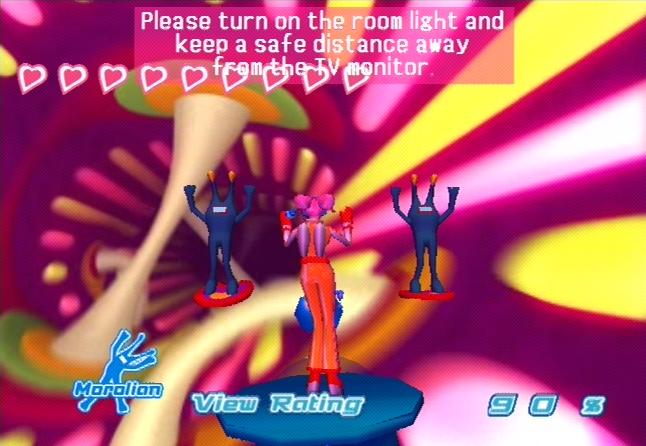
As inventive and unique Space Channel 5‘s characters, design and music are, gameplay is incredibly simple. Players make their way through the game as Ulala, controlling her during dance battles using the directional buttons and two lasers – one that destroys enemies and one that saves hostages. For the most part, the game plays like Simon, with players inputting the exact movements the computer had executed while matching the rhythm. Matching the rhythm is key, as there is no room for error or freestyle movements. Some battles mix up the formula, asking the player to do the opposite of what the computer does (up is down, left is right). Rescuing hostages is rewarding, as it not only improves your score but also allows you to assemble an entourage of backup dancers including some unique characters that influence dance moves as the player makes their way to the next battle.
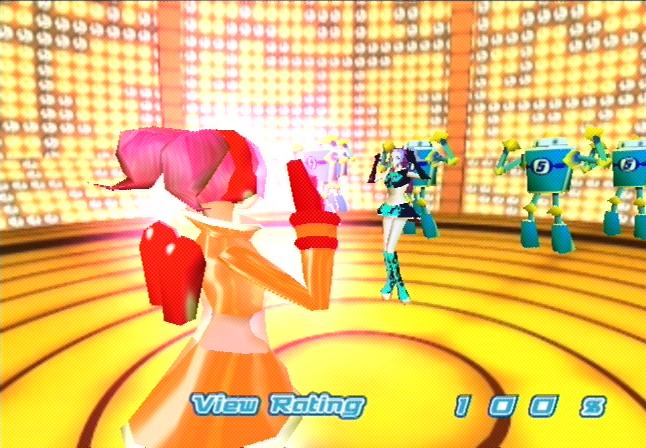
Players make their way through four unique stages (called “reports”) which when combined take a little over an hour to complete. Staying true to the TV station framing device, good performance increases viewership which is shown as a percentage in the corner of the screen. To progress from report to report, not only must you reach the end of a stage, but players must also meet a viewership minimum which gets progressively higher and tougher to hit with each report. The better you play, the more upbeat Ulala will be and the more bombastic the music will get, meanwhile poor viewership causes Ulala to mope and the music to go out of tune. Getting above 95% will cause Ulala to burn with a purple flame while 0% leads to a game over. A game over can also occur during battles in which Ulala has a set amount of hit points. Sub-bosses and end stage bosses are each unique with their own unique music tracks and situations, but the rhythm gameplay remains largely the same.
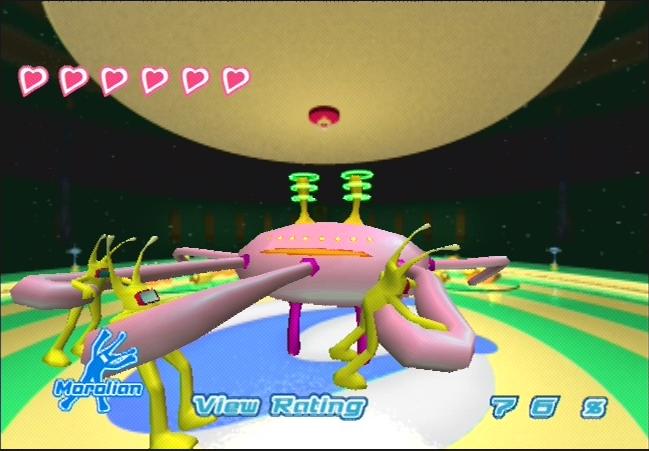
While the game is quite short, with four reports spanning an hour’s time, increasing difficulty will no doubt have players replaying later stages to progress. Also, there are alternate paths that occur within reports for players that maintain a rating of 90% or above. Still, I can’t help but want more from Space Channel 5. Even upon release in 2000, I recall being disappointed with the game’s length and lack of any real extras. A costume changing feature would have been fun, as would a more fleshed out stage select feature. As is, a completed save file can jump between reports on the file loading screen with no options for difficulty or other upgrades. Graphically, the game is nothing special. Characters are low in polygons and United Game Artists employed a unique but flawed process where characters are placed on top of a full-motion video backgrounds. While the concept could have brought about some really impressive pre-rendered visuals, video on the Dreamcast is blurry and low resolution and often the characters and backgrounds can go out of sync. The Playstation 2 release, however, has crisper video and the sync issue has been resolved. Interestingly, producer and United Game Artists leader Tetsuya Mizuguchi later utilized in-game graphics on top of HD video in his Xbox 360 and Playstation 3 game Child of Eden to stunning effect, proving that they were on to something with the concept.
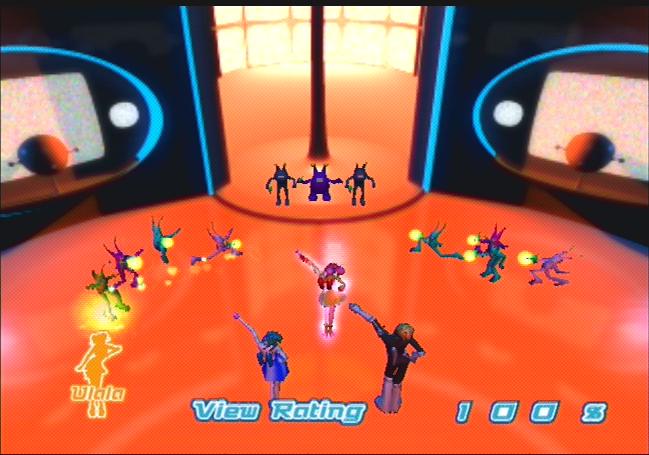
Space Channel 5 was much hyped at the time, and the final product doesn’t quite live up to the level of publicity SEGA gave the game. Still, excellent character, enemy and environment design and a stellar soundtrack make Space Channel 5 a unique experience. While the game may only be an hour in length, I’d like to think of it as a really good soundtrack that you will want to listen to (and play along with) again and again. At $50 in 2000, Space Channel 5 was a tough sell, but today the original game can be had for around $10 and is a must play for any SEGA fan. Also, United Game Artists did return to the world of Space Channel 5 with a sequel that fixed every complaint I had about the original, but that’s a review for another day.
Positive:
- Excellent character design
- One of the Dreamcast’s best soundtracks
- Easy to pickup gameplay
- Space Michael!
Negative:
- Four stages and only an hour in length
- Gameplay leaves little room for error
- No alternate costumes
- Pre-rendered video backgrounds look fuzzy and can go out of sync
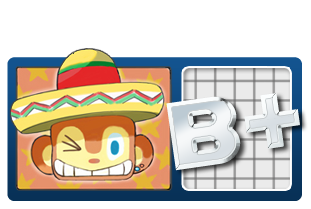 “A fun but flawed Dreamcast classic!”
“A fun but flawed Dreamcast classic!”[Screenshots credit: Hardcore Gaming 101]
Ad:

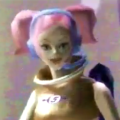

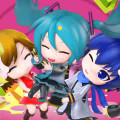
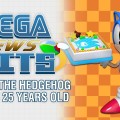
Oh space channel 5. This game is just super fun
Space Channel 5 is one of my favorite Dreamcast games! =)